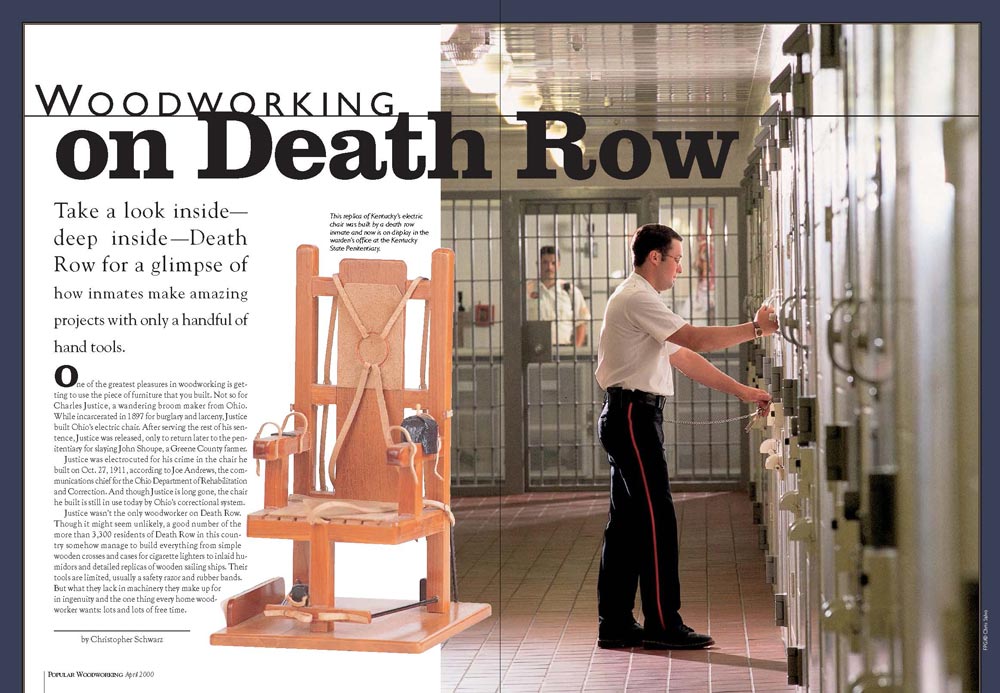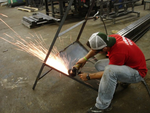We may receive a commission when you use our affiliate links. However, this does not impact our recommendations.
I’m leaving the world of woodworking magazines after 22 years as an editor, writer and builder. But I don’t think I’m a rat fleeing a sinking ship. I still think printed magazines have a place in our digital age. But to survive, a magazine requires an editor with a set of brass ones.
First, let me say that almost everything I’ve read about woodworking magazines on forums and in comments does not resemble my experience in media. Most of the commenters have never worked in the field, but they have a cousin who worked for a weekly newspaper in Monkey’s Eyebrow, Ky. So ergo – media genius.
The following might be crap as well. But it is crap that has accumulated in my head since I was tracked into the journalism program at age 13 at Chaffin Junior High. And I’m still in that track at age 50. Here we go.
The Reader is Usually Wrong
Editors have two broad choices about how to run a magazine. She can be a lamp or a mirror. The mirror approach is the easiest. You survey people about what they want to read, and then you tailor your editorial content to satisfy that need.
There are two problems with that approach. First, few editors really know anything about designing and executing a survey that is free from biases, that uses proper controls and that offers statistically significant results. Even if they wanted to do these surveys, they wouldn’t because they are incredibly expensive. Good data costs money.
And so most of the magazine survey results that I’ve seen – in the woodworking industry and out – create editorial that is akin to mushy peas or Zwieback toast. Yes, it might seem edible, but it will kill you in the long run.
The second problem with “giving the people what they want” is the people themselves. Imagine you are a kindergarten teacher and you ask the students: What should we learn this year? And then you created a lesson plan based on recess, cartoons and pulling Janet’s hair.
That’s why I prefer the riskier approach of trying to be the lamp.
Simply put, chase after what is deeply interesting to you. Find stories, writers and approaches that stand in stark contrast to what you believe. Approach writers who criticize your magazine and find out what they would publish. Don’t publish anything with the word “ultimate” in it. Search out difficult people who might not even be literate (we had a couple) and ghostwrite for them. Avoid writers who make most of their income from writing. Their copy might be easy to edit, but it will likely be boring.
Be in trouble – both with your staff and your superiors – because of your editorial decisions. I had two staff members who I thought were going to take a swing at me (and this is because of my editorial decisions). If your magazine is good, it will make money, and the people above and below you will (likely) respect your approach.
Advertising
Decide if you work for the readers or the advertisers. It’s easier to make a few dozen advertisers happy than 200,000 readers. The problem with the advertising approach is that it can quickly go sour on you. If a few fickle advertisers get grumpy, your magazine will suffer or (if a lot get grumpy) even go under. If a few readers get grumpy, you’ll be fine.
Don’t Take Free Stuff
It’s easy to take free tools, hardware or supplies. Resist that path because it leads to making infomercials. If you need a tool (for a review, for example) and your budget can’t afford to buy it, borrow it and send it back. Be honest with your readers about this. If you take a free tool, be a big girl or boy and at least admit it in print.
Why Am I Telling You This?
The woodworking internet doesn’t do the difficult stuff (in general). It’s driven by personal celebrity, quick-and-easy SEO-driven stuff and iconoclastic approaches to making things in garages. I love the internet and wish it well. But great content requires money, time and hard effort. It’s then expensive to take that great content, print it on paper and mail it out across the world. And it’s impossible to please 200,000 people and convince them to send you money.
But I think if you find editors who will take the hard road every time, there’s a chance that magazines will still be lining the finest birdcages in 2124.
— Christopher Schwarz
Here are some supplies and tools we find essential in our everyday work around the shop. We may receive a commission from sales referred by our links; however, we have carefully selected these products for their usefulness and quality.











Bravo, Chris!
Lots of backend problems with the site update. Besides comments, six months of my own blog posts disappeared. All of these things are in the database, so they’ll be back, I’m sure. Modern site development is tricky stuff. It takes a while to get things right.
Thank you for all the skills that you taught me. I’m not certain why you chose some of the projects but I learned something from each of them. That is the reason I take the Journal. Enjoy what ever you decide to do next.
“The woodworking internet doesn’t do the difficult stuff (in general).”
– Amen. Its easy to get caught up in the overly favourable “reviews” of tools, but a close look reveals that most of the popular accounts didn’t actually pay for any tools. Watch a few early youtube videos from a personality, those were likely purchased, then see the new “insert colour” stuff show up later. You also don’t see many of these personalities building projects that you find inside of the big wood working magazines, just like you don’t see an epoxy resin table in pop wood, or FWW mag. Why I generally like the magazines 🙂
How hard is it to state that x was provided by the manufacturer. I don’t get it.
One internet woodworking personality that gets it right, and does the hard stuff is Marc from the WoodWhisperer, all class.
I think it’s precisely Marc that Schwartz rails against. I found Marc to be very sly with his endorsements. He even once said that his own sleds were unacceptable and recommended his new very expensive sled.
I agree! Marc’s whole festool thing was such a scam. He happily (and convincingly) endorsed festool for years. They decided to drop him (for whatever reason) and he threw his toys out of the crib. He decided to stop using their stuff (for the most part) and went through 3 different miter saws (bosch, makita, dewalt) and won’t use a Kapex (even though he has admitted it is more accurate and has better DC) simply because they are no longer paying him.
I am not sure which is worse – using a product simply for the sponsorship dollars, or refusing to use a product unless you get paid.
I guess I am a dinosaur at the age of 40 but I still like magazines and newspapers. Maybe it helps that I fly 50,000 miles a year and I much prefer reading paper on a plane than staring at a screen.
I do find nearly all of the yourube woodworkers to be insufferable.
Where did all the other comments go?
I think they had a technical problem when they updated the template of the blog. The original post and its comments are still in the backend. Weird computer stuff.
Amen!